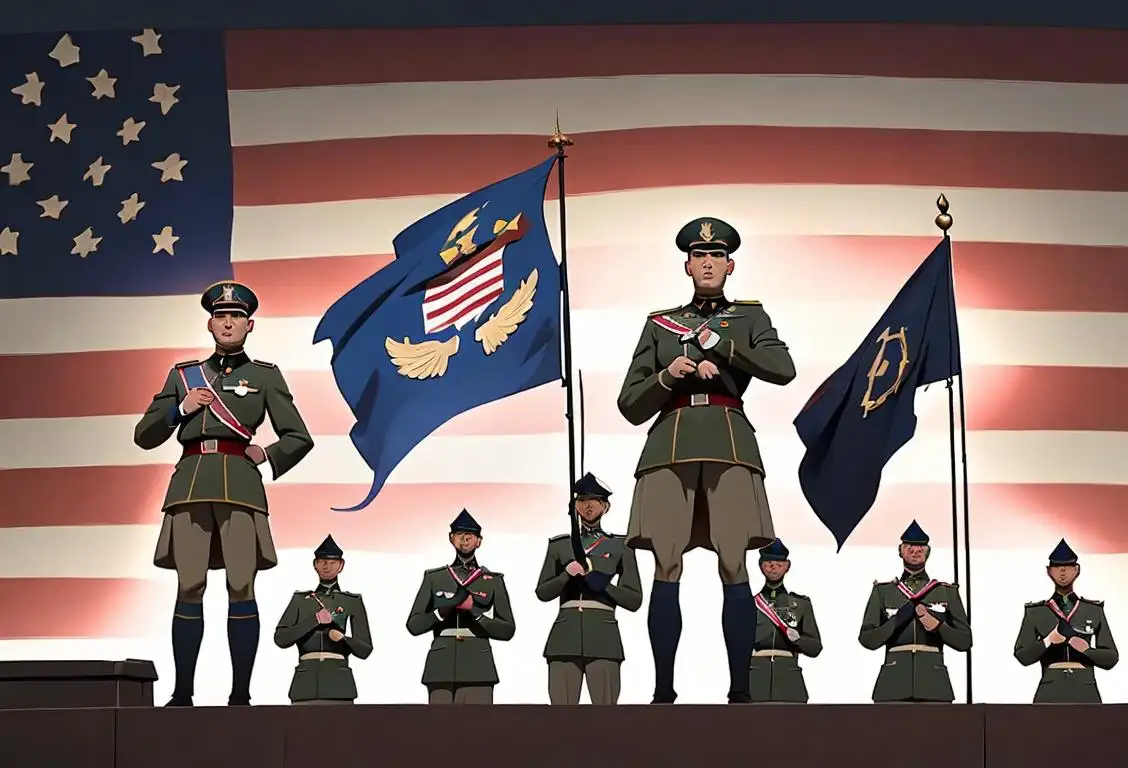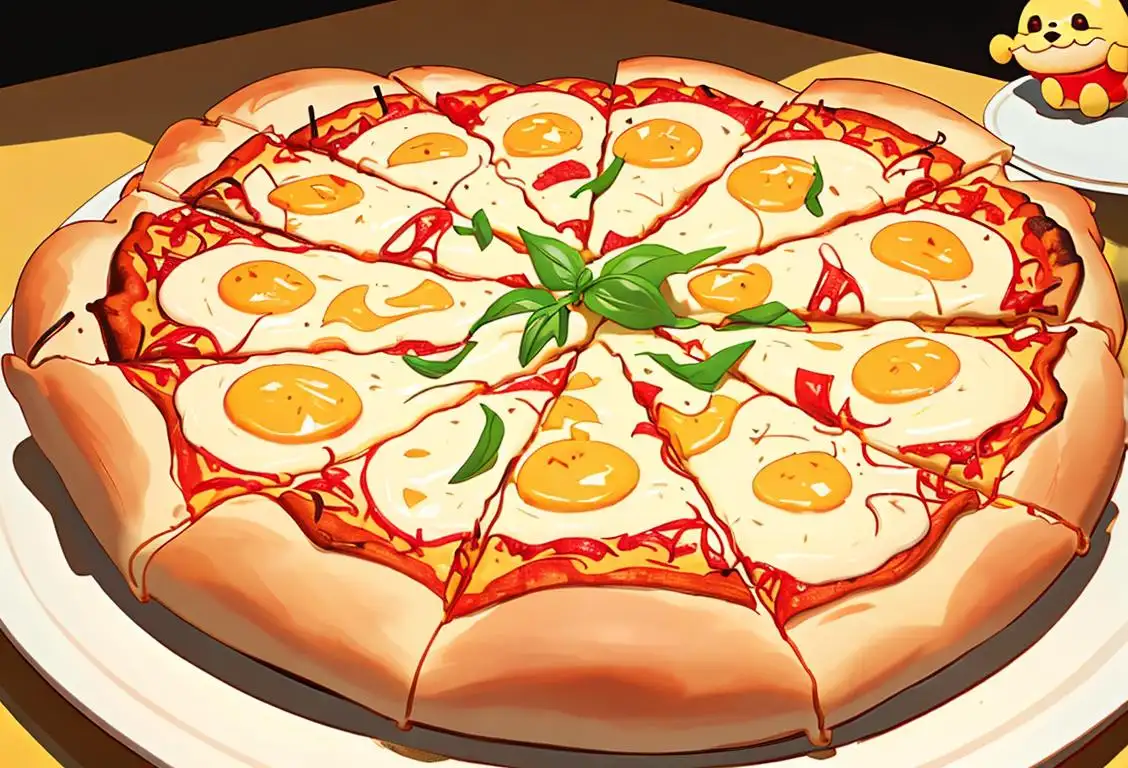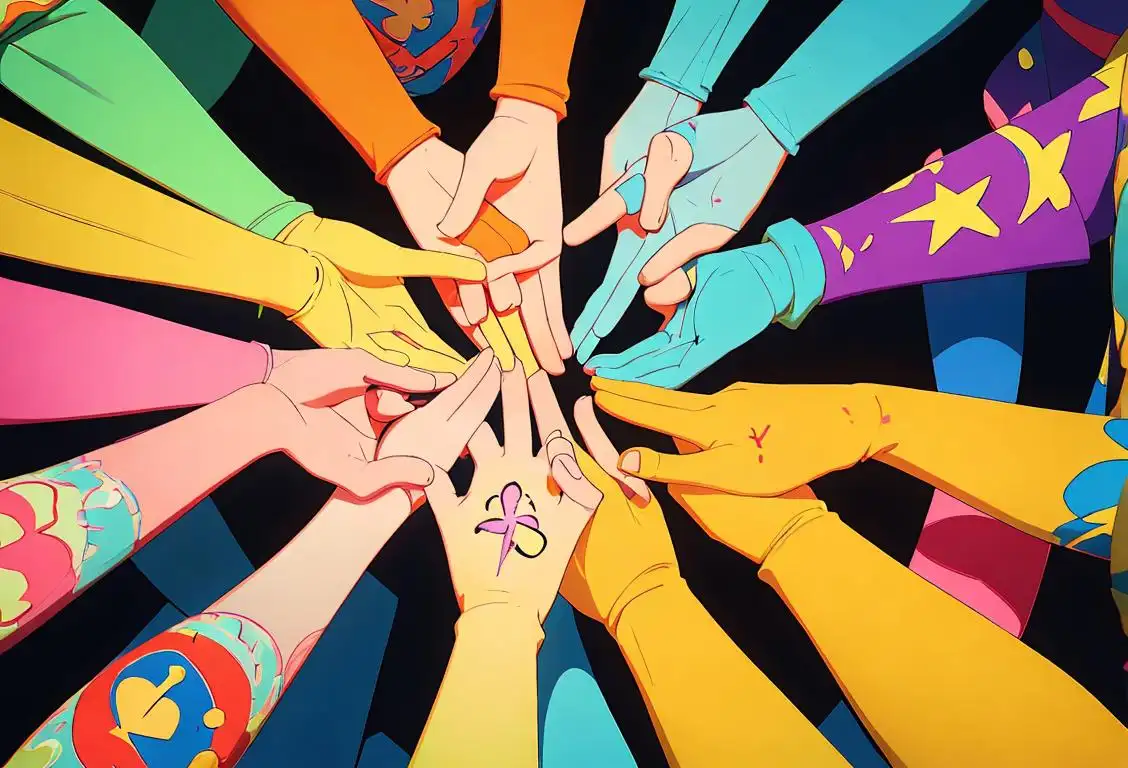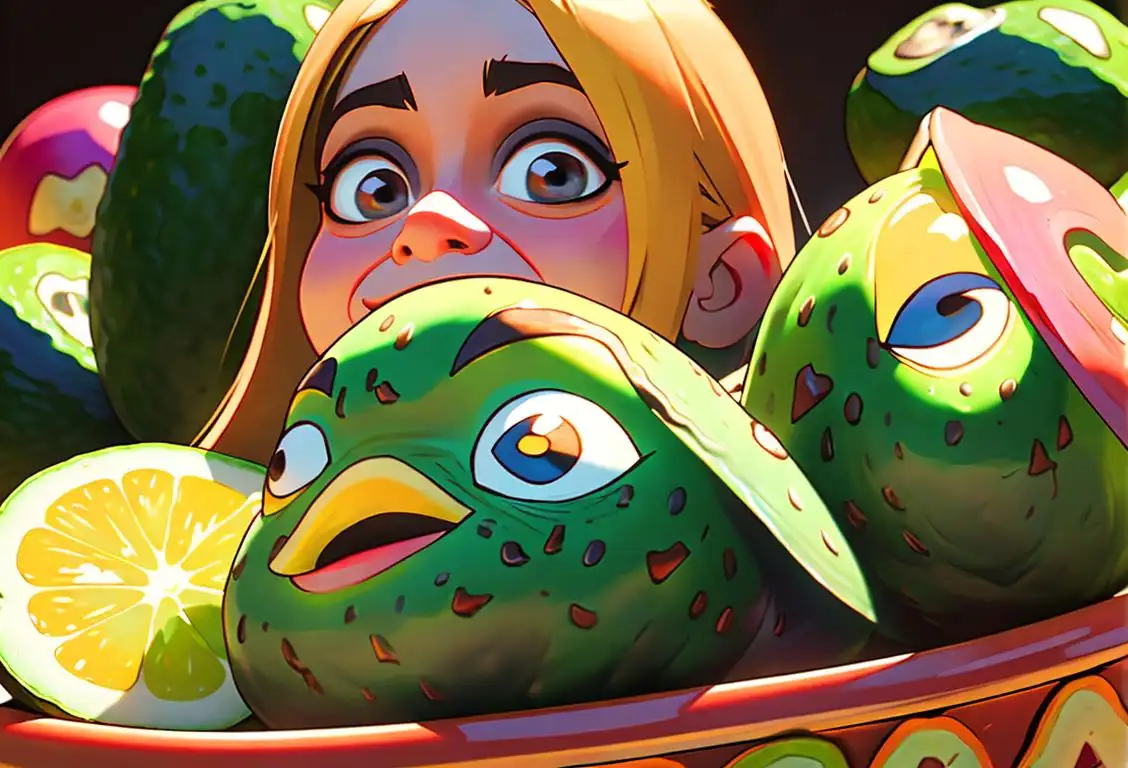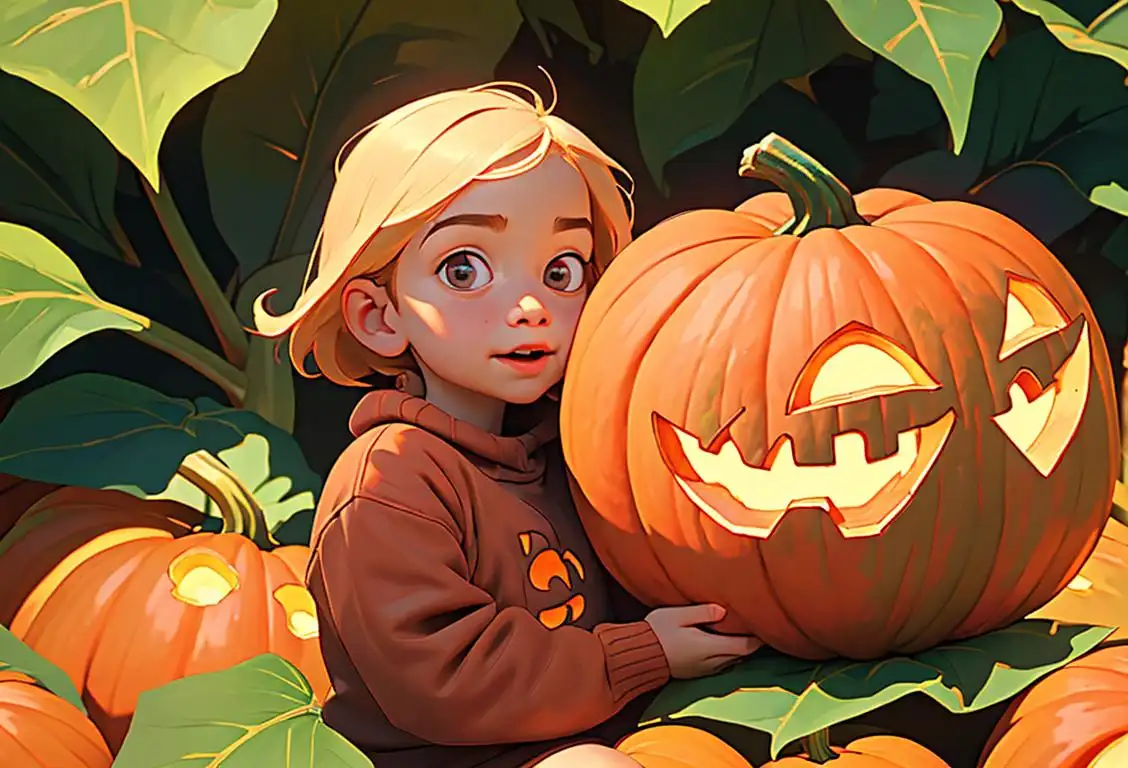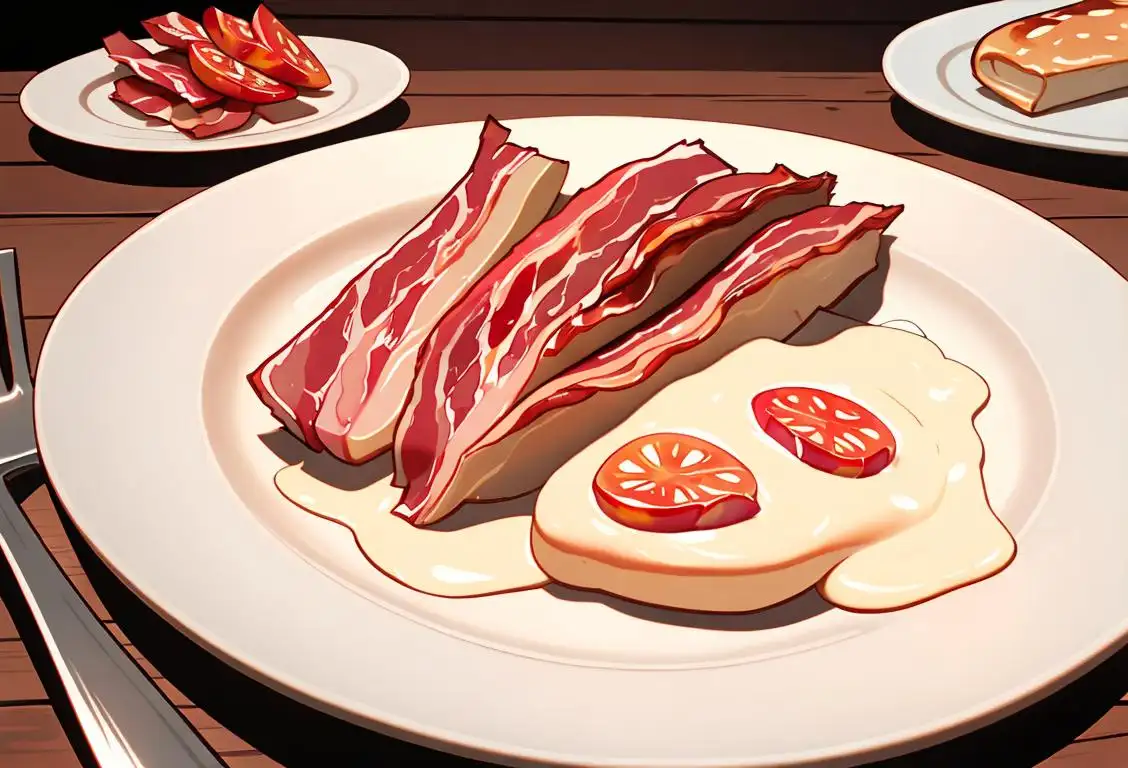National Mischief Day

Get ready to cause a little mischief because it's National Mischief Day! This mischievous holiday gives you the perfect excuse to let out your inner prankster and have some fun. Whether it's pulling harmless pranks on your friends or indulging in a little playful mischief, this day is all about lighthearted fun and laughter. So put on your thinking cap and get ready to pull off some delightful tricks.
When is Mischief Day?
It's national mischief day on the 18th June.
The Origin of National Mischief Day: Internet History Unveiled
Every year on June 18th, mischief lovers from around the world gather to celebrate National Mischief Day. But have you ever wondered how this mischievous holiday came to be? Let's dive into the internet history and uncover its origins.
Back in 2017, the internet was buzzing with mentions of National Mischief Day. With a total of 19 mentions online, it was quite clear that people were excited to embrace their mischievous side. June 18th of that year became the day when the most mischief-related discussions took place, and thus, National Mischief Day was born. From that point on, it became an annual tradition for pranksters, jokesters, and mischief-makers to come together and celebrate their shared love for harmless trickery.
How to Celebrate National Mischief Day
Celebrating National Mischief Day is all about having fun while respecting others' boundaries. Remember, the goal is to bring smiles, not tears. Here are a few ideas to get your inner prankster in action:
- Send a funny and unexpected email to a friend or coworker.
- Surprise someone with a harmless prank, like a whoopee cushion or a fake bug.
- Swap out the sugar with salt in the kitchen (just be prepared for the consequences).
- Create a playful treasure hunt for your loved ones, leading them to a silly surprise.
Just remember to gauge the situation and ensure that your mischief brings laughter, not distress. National Mischief Day is all about spreading joy and giving everyone a good laugh.
History behind the term 'Mischief'
1250
Origins of the Term
The term 'mischief' originated from the Old French word 'meschief', which derived from the Latin word 'miscefacere', meaning 'to do harm'. In its early usage, 'mischief' referred to any form of harm or injury caused to someone or something.
14th century
The birth of 'mischief'
The term 'mischief' originated in the 14th century from the Old French word 'meschief', which literally meant 'misfortune' or 'trouble'. It came from the combination of the prefix 'mes-' (meaning 'bad' or 'wrong') and the noun 'chief' (meaning 'end' or 'head'). Originally, 'mischief' was used to describe an unlucky or unfortunate event.
15th century
Origins from Old French
The term 'mischief' originated from the Old French word 'meschief', which means 'misfortune' or 'trouble'. During the 15th century, the term began to be used to describe playful or harmless troublemaking.
1250
Origin of the word 'mischief'
The term 'mischief' originated in Middle English from the Old French word 'meschief', which meant 'misfortune' or 'mishap'. During this time, the term was primarily used to describe unfortunate events or accidents that caused trouble.
1250
The Meaningful Beginnings
The term 'mischief' traces its roots back to the Middle English word 'meschief', which was derived from Old French. In its early usage, it referred to an unfortunate event or calamity. This usage emphasized the negative consequences of certain actions or events, irrespective of intention. From the very beginning, 'mischief' carried a weight of misfortune and trouble in its connotation.
13th century
The Origins of the Term
The term 'mischief' originated in the 13th century from the Old French word 'mescheief,' which meant 'misfortune' or 'trouble.' It derived from the Latin word 'mischĭa,' meaning 'mixture' or 'discord.' In its early usage, 'mischief' referred to a state of chaos or disturbance, often associated with unfortunate events.
1400
Evolution of 'mischief' to include mischievous behavior
By the 15th century, the term 'mischief' began to expand its meaning to include mischievous behavior and playful pranks. It became associated with actions that caused mild trouble or harm but were not necessarily malicious in nature.
16th century
Expanding to Include Mischievous Behavior
By the 16th century, the term 'mischief' expanded to encompass the concept of mischievous behavior. It came to describe actions that caused trouble, harm, or annoyance. At this point, 'mischief' was primarily used to characterize the playful yet troublesome conduct of children.
1590
Taking a Wicked Turn
Over time, the term 'mischief' started to evolve, encompassing a sense of playful or mischievous behavior. During the Elizabethan era in England, the word acquired a more lighthearted and sometimes even exciting meaning. Rather than solely representing negative outcomes, 'mischief' began to depict pranks, tricks, and playful antics, often done with an innocent intention to amuse or entertain.
16th century
Evolution into 'mischief'
In the 16th century, the Old French term 'meschief' evolved into the Middle English word 'mischeif' or 'mescheef'. It gradually developed a broader meaning, referring to both misfortunes and playful naughtiness.
15th century
Expanding the meaning
In the 15th century, the meaning of 'mischief' evolved to encompass broader concepts of misbehavior, naughtiness, and playful troublemaking. It began to be associated with pranks, practical jokes, and playful acts that were intended to cause mild disruption or amusement rather than harm.
14th Century
Evolution of the Meaning
During the 14th century, the meaning of 'mischief' expanded to encompass the notion of playful or mischievous behavior that could cause annoyance or minor trouble. It started to denote pranks, tricks, or spirited antics that were intended to be harmless but still brought about a sense of amusement or irritation.
1600
Inclusion of 'mischief' in legal contexts
During the 17th century, the term 'mischief' found its way into legal language. It was used to refer to actions that caused harm or damage with intent, often associated with vandalism or malicious behavior. The inclusion of 'mischief' in legal contexts further solidified its association with harmful actions.
17th century
Popularization in Shakespeare's Works
The term 'mischief' gained popularity during the 17th century, partly due to its frequent usage in the plays of William Shakespeare. Often used to describe the actions of mischievous characters, the word became ingrained in the English language and its usage expanded further.
16th century
Shakespeare's influence
During the 16th century, William Shakespeare popularized the term 'mischief' through his renowned plays. He used the word in various contexts, often to depict mischievous characters and their playful antics. Shakespeare's works, such as 'A Midsummer Night's Dream' and 'Twelfth Night', helped solidify 'mischief' as a term associated with mischief-making and humorous trouble.
16th Century
Influence of Shakespeare
The works of William Shakespeare played a significant role in popularizing the term 'mischief' and solidifying its association with playful behavior. In many of his plays, Shakespeare employed the term to describe the jocular actions of certain characters, highlighting how mischief could be both entertaining and mischievous in nature.
1715
Publishing Mischievously
In the early 18th century, the word 'mischief' found its way into the literary world. The renowned author Jonathan Swift, known for his satirical work, published a collection of essays titled 'A Tale of a Tub' in 1715. Within this collection, he used the term 'mischievous' extensively, introducing it as a way to describe playful, teasing, and cunning behavior. Swift's writing played a crucial role in popularizing the term's association with playful acts.
19th century
Legal Usage
In the 19th century, 'mischief' gained significant usage in legal contexts. The term was employed to refer to various criminal offenses involving damage or interference with property. Legal codes often included specific provisions addressing 'mischief,' reflecting its prominence as a distinct category of offense.
18th Century
Mischief as a Legal Concept
In the 18th century, the legal system adopted the term 'mischief' to describe specific crimes and offenses involving damage or disruption. The offense of 'mischief' encompassed vandalism, destruction of property, and other similar acts that caused harm to individuals or society. This legal usage further reinforced the negative connotation of the term.
18th century
Embracing the Playful Aspect
By the 18th century, 'mischief' had embraced its predominantly playful connotation. It was commonly used to describe harmless pranks, tricks, and misbehavior, often involving children or jovial individuals engaging in lighthearted troublemaking.
1750
Mischief as a characteristic of childhood
In the 18th century, 'mischief' increasingly became associated with childhood. It was seen as a natural part of growing up and exploring the world. Mischief was considered an attribute of lively, curious children who engaged in playful antics that sometimes resulted in minor trouble.
1798
The Mischief-Maker Emerges
In the late 18th century, the term 'mischief-maker' gained traction, particularly in political and social contexts. During this time, it referred to individuals who engaged in disruptive or provocative activities with the intention of causing chaos or inciting change. These 'mischief-makers' were often seen as catalysts for rebellion and revolution, challenging established norms and authority. The term's association with rebellion added a layer of deeper significance to the concept of 'mischief.'
19th century
Mischief in literature and children's stories
In the 19th century, 'mischief' continued to gain prominence in literature and children's stories. The term became a central theme in stories that revolved around mischievous children, such as Mark Twain's 'The Adventures of Tom Sawyer' and 'The Adventures of Huckleberry Finn'. The popularity of these works further solidified 'mischief' as a concept that represented harmless pranks and mischief done with a sense of adventure and excitement.
20th century
Cultural Influence
In the 20th century, 'mischief' became deeply embedded in popular culture. It featured prominently in literature, movies, and various forms of entertainment, often associated with playful pranks, tricks, and humorous acts of disruption. The mischievous character archetype gained widespread appreciation, with famous fictional characters like Puck from Shakespeare's 'A Midsummer Night's Dream,' Dennis the Menace, and Bart Simpson embodying this mischievous spirit.
20th Century
Mischief in Popular Culture
Throughout the 20th century, the concept of 'mischief' became deeply ingrained in popular culture. It featured prominently in various forms of media, including books, films, and cartoons. The mischievous characters, such as Dennis the Menace or Bart Simpson, captivated audiences with their pranks and shenanigans, further solidifying 'mischief' as a widely recognized term.
20th Century
Mischief Goes Mainstream
As time progressed into the 20th century, 'mischief' started to become firmly embedded in popular culture. Its portrayal in literature, movies, and various art forms solidified its image as a characteristically mischievous behavior. The term was frequently used in works aimed at entertaining and captivating audiences, presenting mischievous characters and their adventurous escapades. This pervasive representation further popularized and normalized the concept of 'mischief' in everyday language.
20th century
Mischief in popular culture
As the 20th century dawned, 'mischief' became deeply ingrained in popular culture. It became a common motif in comedy films, animated cartoons, and humorous literature. Characters like Dennis the Menace, Bart Simpson, and Puck from 'A Midsummer Night's Dream' became iconic representations of mischievous behavior. 'Mischief' was celebrated for its ability to bring joy, laughter, and a sense of playful rebellion.
Present Day
Celebrating Mischief
Today, 'mischief' continues to be celebrated in various forms. It is often associated with pranks and jokes, particularly on April Fools' Day, where mischievous behavior is embraced and encouraged. People participate in playful acts of mischief, creating an atmosphere of lighthearted fun and amusement. 'Mischief' has become an integral part of our cultural fabric, representing the mischievous spirit within us all.
19th century
Influence on Popular Culture
Throughout the 19th century, the concept of 'mischief' and its association with playful misbehavior continued to influence popular culture. It became a recurring theme in literature, theater, and various forms of entertainment, further solidifying its place in everyday vocabulary.
1900
Popularity of 'mischief' in literature and entertainment
In the 20th century, the concept of 'mischief' gained further popularity through literature, films, and entertainment. Books like Mark Twain's 'The Adventures of Tom Sawyer' portrayed mischief as an essential element of youth and adventure. This cultural portrayal reinforced the idea that mischief is a charming and endearing trait.
20th century
Mischief in Films and Media
In the 20th century, 'mischief' gained even wider recognition through its portrayal in films and other media. Mischievous characters and their playful antics became beloved across various genres and mediums, leaving a lasting impact on the cultural understanding and appreciation of 'mischief'.
Present day
Mischief continues to charm
In the present day, 'mischief' remains a beloved term that captures the imagination and playfulness of people worldwide. Its association with harmless pranks, practical jokes, and lighthearted troublemaking endures. From April Fools' Day to mischievous characters in popular culture, 'mischief' continues to bring smiles and laughter to our lives, reminding us of the joyous spirit of playful misbehavior.
2000
Modern interpretation of 'mischief'
In the present day, 'mischief' is widely regarded as playful behavior that is not intended to cause serious harm or damage. It is often associated with pranks, practical jokes, and harmless tricks. The term has become ingrained in popular culture and is now celebrated on National Mischief Day, a day dedicated to harmless fun and mischievous activities.
Today
An Enduring Reputation
In the present day, 'mischief' continues to be a widely recognized and intriguing term with a rich history. It encapsulates a range of meanings, encompassing both harmless pranks and slightly more devious acts. Whether seen in the innocent mischief of children or the playful antics of pop culture characters, the term 'mischief' retains its fascinating allure and enduring reputation.
Did you know?
Did you know that April Fools' Day is often considered the unofficial precursor to National Mischief Day? Both holidays share a common theme of harmless pranks and playful tricks. So if you're a fan of April Fools' Day, chances are you'll love celebrating National Mischief Day too!Tagged
fun loved onesFirst identified
17th June 2016Most mentioned on
18th June 2017Total mentions
19Other days
Medal Of Honor Day
Cheese Pizza Day
Foundation Day
Cancer Survivors Day
Suicide Prevention Day
Compliment Day
Memorial Day
Guac Day
Pumpkin Day
Bacon Day
